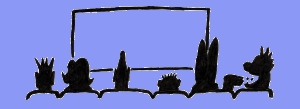Producing an AV Sequence (Part 6)
Making the sound track
The first stage is to record the voice. I use a Sony MZ-R91 digital recording Walkman and microphone.
I quieten the house as much as possible and try to eliminate any outdoor noises. I put the microphone on a stand to avoid handling noise. I put the script, in polythene covers, on a music stand to prevent rustling. I practice reading the script aloud several times before recording to check delivery and intonation. I record all the commentary in one session as it is very difficult to create the same conditions on a separate occasion. If I make a mistake I record that piece of script again immediately after the fluff, then edit it out later. At the end I record approximately a minute of the low ambient sound present in the room, to be used when inserting pauses at the editing stage. I never use silence for this purpose. Any silences in the pauses will be detected by discerning ears despite the fact that there will be music behind it.
Since hearing a lecture on voice production, I now realise the importance of standing, rather than sitting, when recording the voice. In this way much more can be done with the voice in terms of register, control, etc.
I use a close-proximity microphone, on a stand, pointing downwards, just about nose level, my mouth being about a hand's span away from it. By speaking across the microphone rather than into it, this reduces the incidence of popping p's. The close-proximity microphone accentuates the bass in the voice and it may be necessary to reduce the bass content at the mix-down stage.
As the voice is being recorded a second person will be keeping an eye on the LED's to check the recording level and monitoring the input very carefully through headphones to check the delivery and intonation. I try to ensure that no distortion or unwanted sounds are being recorded. Some sentences may be repeated and the best rendition selected later.
Having completed the voice recording, I listen to it again, through speakers, to make sure that I am satisfied with the quality.
The next task is to edit the recording in one of Cool Edit programs, either Cool Edit Pro or Cool Edit 2000. These programs have been superseded by Adobe Audition but I am happy with Cool Edit.
Any unwanted clicks, etc are removed and the best rendition saved. The voice is then spaced out according to the times on the cue sheets and will be timed again because the final recording time may not be exactly the same as provisional timings.
The music is now laid down on another track. As stated previously, I normally use a number of different pieces of music, each piece having been selected to create the mood required at each stage of the sequence. I choose suitable editing points for each piece of music, trying to ensure that the two pieces I am joining are in the same key, etc., then I cross-fade seamlessly. Any crescendos etc. that I am using will have been checked against the voice track. I then run the soundtrack and listen carefully to the voice and music match. If they do not match what I have planned then I edit the voice, or the music, or both. Then before the final mix down I will do a number of trial runs to determine the levels for the music and sound effects in relation to the voice.
All this monitoring is done through external speakers, never the computer speakers.
When I'm finally satisfied I mix down the voice and music tracks and save the mix-down as a 'wav'. I then save the mix-down as an 'mp3', and this will be inserted in the PTE program, under music, for that particular sequence. Both the wav. and mp3 files will be filed in the sequence folder along with the original images, jpegs, pte file and exe file.
< Back to start < Previous Next >

